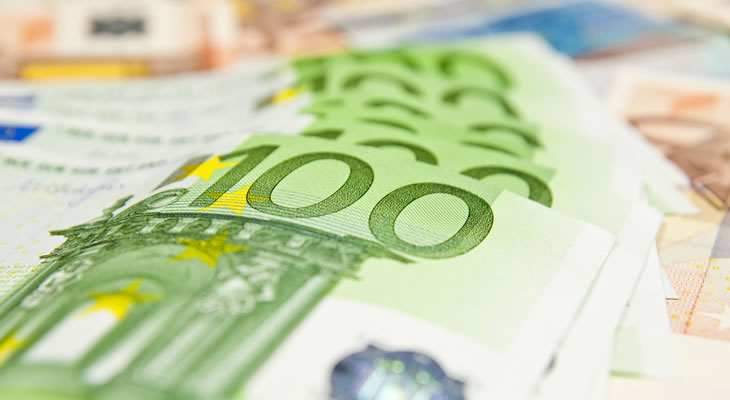Higher Nationwide House Prices Fail to Shore up Pound Sterling (GBP)
In spite of a far stronger-than-expected Nationwide House Prices report, which clocked in at 5.7% rather than 5.1%, the Pound Sterling (GBP) has remained out of favour on Friday morning. Consequently the Pound Sterling to Euro (GBP/EUR) exchange rate has been trending lower in the region of 1.2600.
Earlier…
Downside risks are continuing to drag on Pound Sterling (GBP) today, while the Euro (EUR) has strengthened on the back of a modestly improved Eurozone Consumer Price Index figure.
Pound Sterling (GBP) Trends Lower as UK Steel Industry Under Threat
Investors were pleasantly surprised to find that the German Consumer Price Index had bettered expectations in March. Printing at 0.3% rather than 0.1%, this seemed to indicate that the Eurozone’s powerhouse economy was in a stronger position than previously assumed. The stronger showing equally encouraged speculation that the European Central Bank (ECB) might not feel compelled to loosen monetary policy further in the near term, a prospect that saw the Euro (EUR) trend higher.
With nothing in the way of domestic ecostats on Wednesday the Pound (GBP), meanwhile, continued to weaken against many of the majors. There was little reason for Sterling optimism after Indian conglomerate Tata Steel announced its intention to withdraw from operations in the UK. With up to 40,000 jobs potentially at risk if Tata Steel’s mills close the UK government has been scrambling to find an alternative, exacerbating concerns over the future of the UK manufacturing sector.
Eurozone Inflation Rate Improvement Weighs on Pound Sterling to Euro (GBP/EUR) Exchange Rate
A better-than-expected GfK Consumer Confidence Survey has failed to rescue Pound Sterling from its recent downwards trajectory today, despite holding steady at 0. Markets have also largely ignored the upwards revision of the finalised fourth quarter UK GDP, which has been confirmed at 2.1% rather than 1.9%. Although this indicates that the domestic economy was on stronger form at the end of 2015 the subsequent deterioration of market conditions and ‘Brexit’ concerns suggest that this trend will not have sustained itself.
Although German Unemployment Change was a little disappointing, showing no change on the month in March, this hasn’t prevented the Euro from continuing to advance on Thursday morning. Traders have been encouraged by a modest improvement in the Eurozone’s latest Consumer Price Index figure, which edged higher to -0.1% as forecast. While deflation looks to remain a persistent concern for the currency union this uptick has still seen the Pound Sterling to Euro (GBP/EUR) exchange rate weakened further today.
GBP/EUR Exchange Rate Forecast: Manufacturing PMIs in Focus
Ahead of the weekend the GBP/EUR exchange rate is expected to experience volatility on the back of the latest UK and Eurozone Manufacturing PMIs. Predictions suggest that the UK’s manufacturing sector expanded notably from 50.8 to 51.2 on the month, a sign which could offer some support to the softened Pound.
Additional Euro movement could also be triggered by the US Non-Farm Payrolls report on Friday, with any significant increase in employment likely to lead to a resumption of Fed interest rate hike speculation. Should the figures disappoint, however, the single currency could end the week on a bullish run.
Current GBP, EUR Exchange Rates
At the time of writing, the Pound Sterling to Euro (GBP/EUR) exchange rate was slumped in the region of 1.2645, while the Euro to Pound Sterling (EUR/GBP) pairing was making gains around 0.7906.


Comments are closed.